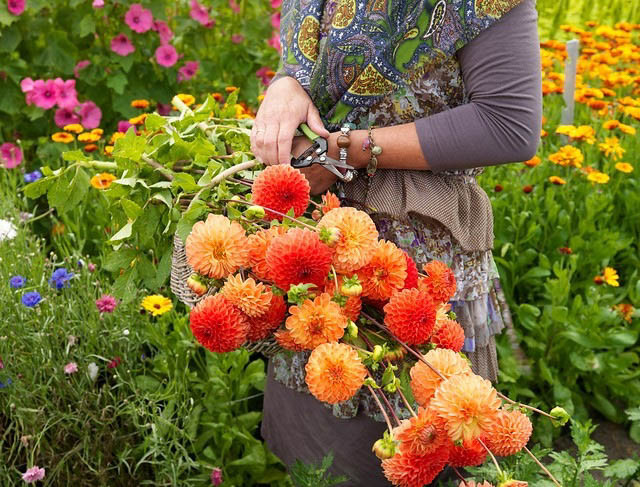Cutting Garden - Expert Tips for Gardening Success
Creating a thriving cutting garden requires a mix of planning, knowledge of plant life cycles, and regular care. Here are some expert tips to help you succeed in creating a vibrant cutting garden:
- Selection of Plants: Grow a variety of plants to ensure a continuous bloom cycle. Incorporate a blend of annuals, perennials, and bulbs, and aim for a mix of types, from main event flowers to fillers and foliage plants.
- Location: Choose a sunny location. Most cut flowers require a lot of sunlight (6-8 hours/day) to produce the best blooms.
- Soil Preparation: Cut flowers demand rich, well-drained soil. Incorporate compost or organic matter to improve its texture and fertility. Regularly check the soil’s pH; most flowers prefer a slightly acidic to neutral soil.
- Planting Time: Successional planting, every few weeks, ensures a steady supply of flowers. Remember to take the life cycle of your plants into account.
- Care: Regular watering is critical, but avoid overwatering as it can lead to root rot. Fertilize appropriately, too much can lead to more foliage than flowers.
- Harvesting: Cut flowers in the cool, early morning hours when they’re fully hydrated. Use sharp scissors or pruners and place stems immediately in water.
- Pest and Disease Management: Monitor plants regularly for signs of pests or disease. Early detection and treatment can save a crop.
- Crop Rotation: Rotate crops year-to-year to prevent soil depletion and interrupt pest and disease cycles.
Remember, a cutting garden is not just about the end product, it’s also about the joy and therapeutic benefits of the gardening process. Happy Gardening!

